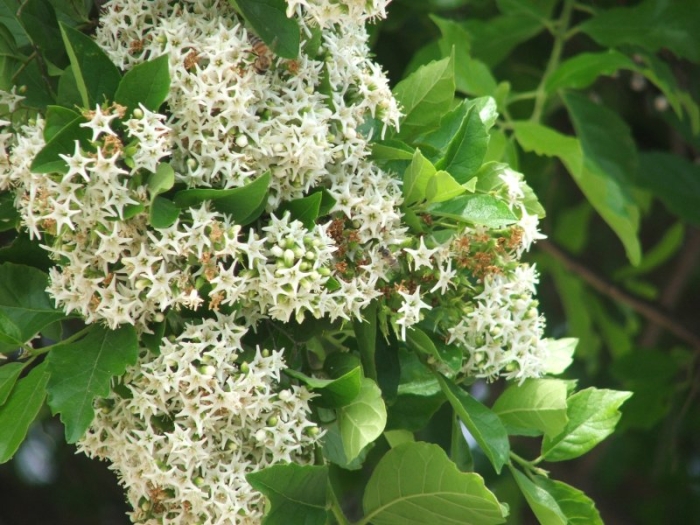Anacua
(Ehretia anacua)
Anacua (Ehretia anacua)
/
/

Carlos Abrego
CC BY-SA 2.5
Image By:
Carlos Abrego
Recorded By:
Copyright:
CC BY-SA 2.5
Copyright Notice:
Photo by: Carlos Abrego | License Type: CC BY-SA 2.5 | License URL: https://creativecommons.org/licenses/by-sa/2.5 | Uploader: Abrego | Publisher: Wikimedia Commons | Title: Ehretia_anacua_flowers.jpg | Notes: {{Information |Description={{de|1=Korallen-Ölweide Früchte}} |Source={{own}}Eigenes Werk |Author=[[User:VoDeTan2|VoDeTan2]]Dericks-Tan |Date=2010.03.03 |Permission= |other_versions= }} [[Category:Botanik]] [[Category:Ölweide]] |


















































Estimated Native Range
Summary
Ehretia anacua, commonly known as Anacua or Knockaway, is an evergreen to semi-deciduous tree or large shrub native to the Rio Grande Valley, coastal chaparral, and thorn scrub forests in Texas, as well as northeastern Mexico. It can grow to a height of 20-45 feet and a similar width, with a rounded canopy and dense foliage. The leaves are broad, leathery, and have a sandpapery texture. In spring and early summer, it produces clusters of fragrant, small white flowers that attract bees and butterflies. These are followed by sweet, pea-sized berries that transition from orange to red as they mature, which are a food source for birds and small mammals.
Anacua is valued for its drought tolerance and ability to thrive in the hot climates of its native range. It is used for urban planting, as a shade tree, and for wildlife gardens due to its attractive flowers and fruit. Anacua prefers full sun to part shade and is adaptable to a variety of soil types, provided they have good drainage. While it is drought-tolerant once established, it benefits from occasional deep watering during prolonged dry periods. It is relatively low-maintenance and has a lifespan of at least 50 years. Anacua is not commonly affected by serious pests or diseases, but it can suffer from root rot in poorly drained soils.CC BY-SA 4.0
Anacua is valued for its drought tolerance and ability to thrive in the hot climates of its native range. It is used for urban planting, as a shade tree, and for wildlife gardens due to its attractive flowers and fruit. Anacua prefers full sun to part shade and is adaptable to a variety of soil types, provided they have good drainage. While it is drought-tolerant once established, it benefits from occasional deep watering during prolonged dry periods. It is relatively low-maintenance and has a lifespan of at least 50 years. Anacua is not commonly affected by serious pests or diseases, but it can suffer from root rot in poorly drained soils.CC BY-SA 4.0
Plant Description
- Plant Type: Shrub, Tree
- Height: 20-45 feet
- Width: 20-45 feet
- Growth Rate: Moderate
- Flower Color: White
- Flowering Season: Spring, Summer
- Leaf Retention: Evergreen
Growth Requirements
- Sun: Full Sun, Part Shade
- Water: Low
- Drainage: Fast, Medium
Common Uses
Bird Garden, Deer Resistant, Edible*Disclaimer: Easyscape's listed plant edibility is for informational use. Always verify the safety and proper identification of any plant before consumption., Low Maintenance, Showy Flowers
Natural Habitat
Native to the Rio Grande Valley, coastal chaparral, and thorn scrub forests in Texas and northeastern Mexico
Other Names
Common Names: Sugarberry , Knock-Away , Sandpaper-Tree , Manzanita , Anacua , Anaqua
Scientific Names: Ehretia anacua , Ehretia elliptica , Ehretia lancifolia , Ehretia exasperata , Ehretia ciliata , Ehretia scabra , Gaza anacua
GBIF Accepted Name: Ehretia anacua (Terán & Berl.) I.M.Johnst.